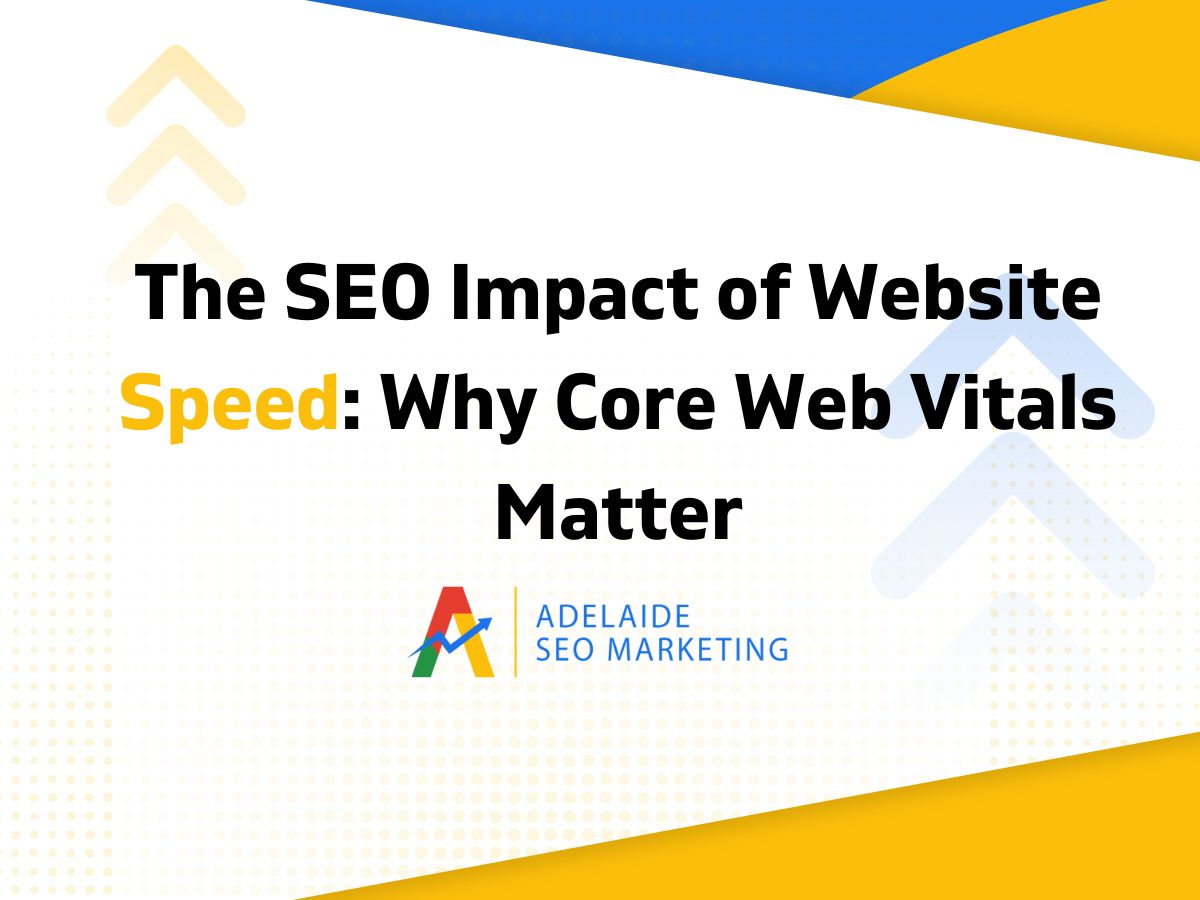In the ever-evolving digital landscape, we understand that the SEO impact of website speed plays a pivotal role in our online success. When our websites fail to load swiftly, we risk losing not only potential customers but also our hard-earned rankings on search engines. As consumers in Australia demand quicker load times, we must emphasise website speed optimization as a critical component of our strategy. Research indicates that even a one-second delay in loading can lead to a substantial decline in conversions and user contentment. With Core Web Vitals introduced by Google as essential indicators of user experience, we have a unique opportunity to enhance both our SEO rankings and user engagement. It’s time to prioritise website speed and Core Web Vitals to stay competitive.
Key Takeaways
- The SEO impact of website speed directly affects search engine rankings.
- Website speed optimization is essential for improving user experience.
- Google’s Core Web Vitals are critical for assessing real-world user interaction.
- Even minor loading delays can significantly impact user satisfaction and conversions.
- Prioritising website speed can lead to better engagement and retention.
Understanding Website Speed and SEO
At Adelaide SEO Marketing, website speed plays a crucial role in both user experience and search engine optimisation. By grasping the definitions of website speed, we can appreciate how it influences the overall effectiveness of our online presence.
Defining Website Speed
Website speed refers to the time taken for a webpage to fully load and present its content to users. This includes all elements, such as images, scripts, and other resources. A swift loading time is essential because it directly impacts how users interact with our site. When we think about website speed, we often consider the seamlessness and efficiency with which a user can access information.
Importance of Website Speed in User Experience
Fast website speed is paramount for delivering a positive user experience. Research reveals that a significant portion of users abandon websites that take longer than three seconds to load. This delay can lead to frustration, reducing user engagement and increasing bounce rates. By prioritising website speed, we can significantly improve user retention and satisfaction, ultimately boosting our site’s effectiveness. This focus not only enhances user experience but also aligns well with SEO strategies, making our sites more attractive to search engines like Google.
The SEO Impact of Website Speed
At Adelaide SEO Marketing, we understand the importance of a website’s speed in the world of SEO. The faster our site loads, the better our chances are of ranking well in search engine results. Google prioritises loading speed, making it a significant factor in site speed and search rankings. When our website performs well in this aspect, we not only gain improved visibility but also attract more potential customers.
How Site Speed Influences Search Rankings
Search rankings can drastically improve with optimised site speed. A quicker website means users experience seamless navigation and access to content. On the flip side, slow-loading pages lead to higher search rankings. This creates a vicious cycle, as lower visibility on search engines often results from slow speeds. A well-optimised site can therefore capture a larger audience, boosting our online presence significantly.
Correlation Between Speed and Bounce Rate
The bounce rate correlation is critical in understanding how speed affects user engagement. Studies indicate that even a one-second delay in loading time can result in a bounce rate increase of up to 32%. This statistic highlights the importance of maintaining fast page loading speeds to keep users on our websites. A high bounce rate signals to search engines that users aren’t engaging with our content, which can lead to poorer search rankings. A swift user experience not only reduces bounce rates but also fosters a positive perception of our brand, encouraging return visits.
Introduction to Core Web Vitals
Understanding Core Web Vitals is an essential step in optimising our online presence. These metrics are integral to creating a seamless user experience and improving our website’s overall performance. Core Web Vitals focus on three main aspects: loading speed, interactivity, and visual stability. Let’s explore what these metrics entail and how they impact our SEO performance.
What are Core Web Vitals?
Core Web Vitals consist of three primary components: Largest Contentful Paint (LCP), First Input Delay (FID), and Cumulative Layout Shift (CLS). LCP measures the loading performance, indicating how quickly the main content of a page loads. FID assesses interactivity by quantifying the time taken for the website to respond to user actions. CLS gauges visual stability, focusing on how much content shifts during page loading.
By focusing on Core Web Vitals, we can ensure our website not only meets Google’s quality standards but also enhances the user experience. This optimisation is vital for bolstering our SEO performance, leading to improved click-through rates and increased conversions in the long run.
Measuring Your Website’s Speed
Understanding the speed of our website is crucial for maintaining optimal user experience and SEO performance. To assess website speed effectively, we can utilise various effective website speed measurement tools available in the market.
Tools to Assess Website Speed
Several reliable tools can help us measure our website’s speed. Some of the most popular options include:
- Google PageSpeed Insights
- GTmetrix
- Pingdom
- WebPageTest
- SiteSpeed.io
These website speed measurement tools provide comprehensive insights that not only reflect loading times but also pinpoint areas where we can improve performance. By taking advantage of these tools, we gain a better understanding of how our site performs under various conditions.
Interpreting Speed Metrics
Once we have gathered our data from the speed metrics analysis, it is essential to interpret these metrics effectively. Familiarising ourselves with benchmarks established by Core Web Vitals can help us identify what constitutes an optimal experience for users. For example:
Regularly evaluating these metrics enables us to pinpoint areas that may require attention. By focusing on these speed metrics, we ensure our website consistently delivers a fast and reliable user experience, ultimately benefiting our SEO performance.
Improving Website Speed for Better SEO
To enhance our website’s performance, we can implement several key strategies. Each method contributes significantly to our goal to improve website speed, ultimately benefiting our SEO outcomes. Focusing on image optimisation, browser caching, and reducing server response time can lead to a superior user experience and better visibility in search engines.
Optimising Images and Media
Image optimisation plays a crucial role in loading times. By compressing images without sacrificing quality, we can significantly reduce the amount of data that needs to be loaded, leading to faster page speeds. This practice not only enhances efficiency but also boosts our site’s appeal to users who expect quick-loading pages.
Leveraging Browser Caching
Utilising browser caching offers great benefits for returning visitors. By storing certain files locally in the user’s browser, we can dramatically decrease loading times for frequently accessed pages. The browser caching benefits become evident as users notice a quicker and smoother experience when revisiting our site. Implementing effective caching strategies can make a substantial difference in overall performance.
Reducing Server Response Time
The server response time is pivotal to improving website speed. Choosing a reliable hosting provider that can manage traffic efficiently is vital. Additionally, optimising our database reduces the time required to process requests, further enhancing the speed. By addressing server response times, we create a solid foundation for our website’s performance, leading to improved engagement and lower bounce rates.
Conclusion
As we wrap up our discussion, it’s clear that the SEO impact of website speed is undeniable. It plays a crucial role in influencing search rankings and significantly enhances user experience. By summarising website speed impact through comprehensive analyses and implementing smart strategies focused on improving site speed, we can make substantial strides in our online presence.
Furthermore, understanding the Core Web Vitals significance cannot be overstated. These metrics not only help in assessing site performance but are essential benchmarks for ensuring optimisation efforts are effective. For businesses in Australia aiming to convert visitors into loyal customers, prioritising website speed and user experience is paramount.
At Adelaide SEO Marketing, we are committed to guiding you on this journey. If you’re ready to elevate your online presence, don’t hesitate to connect with us for a free consultation. Together, we can optimise your website to achieve better speed and higher SEO rankings, paving the way for success in the digital landscape. Contact us today!
FAQ
Why is website speed important for SEO?
What are Core Web Vitals?
How can we measure our website’s loading speed?
What is the relationship between website speed and user experience?
How does a slow site affect conversion rates?
What strategies can we implement to improve website speed?
How does page load time impact bounce rates?
SEO That Converts: More Clicks, More Customers.
Your journey to online success begins here, with Adelaide SEO Marketing. We’re not just a service; we’re your partners in growth.







